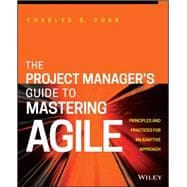The Project Management Profession is beginning to go through rapid and profound transformation due to the widespread adoption of agile methodologies. Those changes are likely to dramatically change the role of project managers in many environments as we have known them and raise the bar for the entire project management profession; however, we are in the early stages of that transformation and there is a lot of confusion about the impact it has on project managers:
- There are many stereotypes and misconceptions that exist about both Agile and traditional plan-driven project management,
- Agile and traditional project management principles and practices are treated as separate and independent domains of knowledge with little or no integration between the two and sometimes seen as in conflict with each other
- Agile and "Waterfall" are thought of as two binary, mutually-exclusive choices and companies sometimes try to force-fit their business and projects to one of those extremes when the right solution is to fit the approach to the project
It’s no wonder that many Project Managers might be confused by all of this! This book will help project managers unravel a lot of the confusion that exists; develop a totally new perspective to see Agile and traditional plan-driven project management principles and practices in a new light as complementary to each other rather than competitive; and learn to develop an adaptive approach to blend those principles and practices together in the right proportions to fit any situation.
There are many books on Agile and many books on traditional project management but what’s very unique about this book is that it takes an objective approach to help you understand the strengths and weaknesses of both of those areas to see how they can work synergistically to improve project outcomes in any project. The book includes discussion topics, real world case studies, and sample enterprise-level agile frameworks that facilitate hands-on learning as well as an in-depth discussion of the principles behind both Agile and traditional plan-driven project management practices to provide a more thorough level of understanding.








